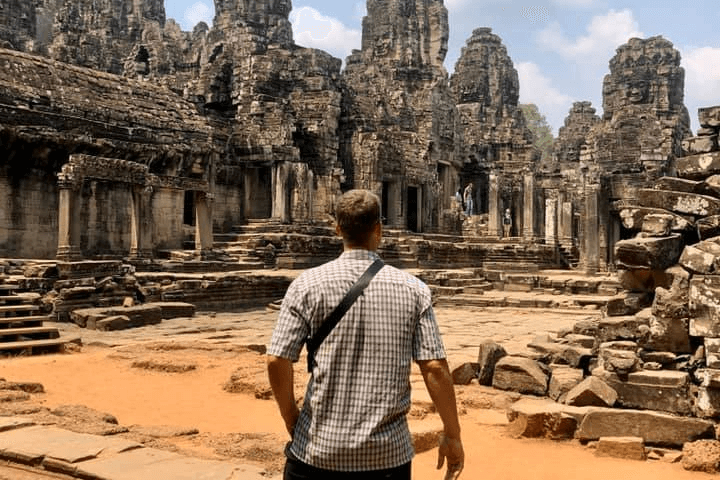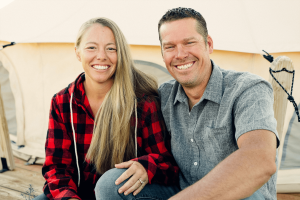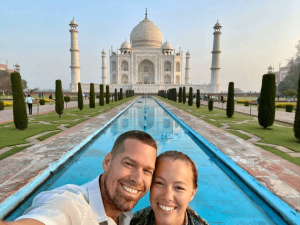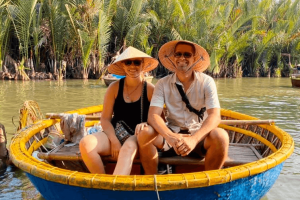We came to Siem Reap, Cambodia to see the legendary Angkor Wat and left with a much more profound appreciation for the archeological ruins than we ever imagined, a fascination with Khmer history and a love of the local people borne of it.
The size of Angkor Wat, Phonm Thom and the dozens of other Hindu and Buddhist ruins are hard to comprehend, even after spending three days exploring the 400-acre archeological park. It shares the craftsmanship and ingenuity of Greek and Roman ruins, but casts them in shadow when it comes to scale.
These ruins were built as the religious and political center of the Khmer Empire in the early 12 century, demonstrating remarkable vision, engineering and execution. The Siem Reap River was redirected into moats and reservoirs from which the Khmer people irrigated and drained the ebbs and floods of the river through droughts and monsoons. This genius irrigation-drainage system assisted to build and defend an empire believed by many to have been 1,000,000 people strong. Some researchers believe it was the largest pre-industrial urban center in the world based upon satellite imaging. At the very least, you can’t argue it is in good company.
The practicality of design can be seen nearly one millennia later. These cities were built tier atop tier, each new layer walled for defense and ascending towards the peaked center, and, of course, crowned with towering temples. While the Khmer empire was eradicated in the 15th century, Angkor Wat continued to be a religiously important destination for some Hindu’s, but mostly Buddhist’s. The jungle has reclaimed many of the lesser temples, swallowing and enveloping walls and buildings in banyan roots and silk cotton trees, a sight guaranteed to spark your imagination and sense of wonder.
I’d argue worse than the jungle, these ruins were decimated most by the Khmer Rouge and it’s aftermath. They came to power in 1975 and in four years, their reign of terror saw religion outlawed, city dwellers forced from homes and into peasant farming roles; innocent people were systematically murdered for protest or independent thought. The list of autocracies goes on. It was one of worst excesses of Marxist Communism in the 20th century, during which an estimated 1.5 – 2 million Cambodians, or roughly 25 percent of the population, were murdered. But it was the aftermath that left the country’s government unstable and ruins vulnerable to 10 — 15 years of antiquity thieves. During this time, virtually every statue was stolen, artifacts were pillaged, relief carvings of value were chiseled out of walls, and all sold to selfish collectors with no regard for history or preservation.
The majesty and scope of Angkor Wat is so monumental that even after the looting we were awe struck by the stylized art and ruins remaining. The temples and cities were first dedicated to the Hindu religion and their respective Gods and lores. Buddhism was incorporated into the art and decoration roughly a century later. Remnants of both are visible today despite the vandalism.
On route to the many ruins are signs warning of monkey attacks. Admittedly, I wouldn’t want to be mauled by an angry mother, but when the young ones “attacked” us, they were anything but intimidating. My first encounter had me crouching down in the hopes of catching a picture. I expected the adolescents to shy away, so I moved quick with the camera. They moved much quicker and intimately attacked me, crawling over me as if I were a jungle gym. I couldn’t stop laughing at their curiosity and mischievousness. They’d lightly gnaw on my finger and arm, as a puppy playfully does, bite the button on my shirt when they realized they couldn’t pull it off, swing around my arms and neck and pull my hair. At one point I had four of them suppling placebo laughing gas. I’m sure contact with them is frowned upon. I hadn’t meant for it to happen. But I certainly did nothing to stop it either. Keshia befell the same fate. Don’t remember how it developed, but they mauled her same same. One was trying to steal her sunnies and hair clip while the another was trying to get into her purse. When she finally salvaged her possessions and walked away, one of the little munchkin’s attempted a final assault, jumping upon her hanging purse, trying to pry the potential loot from its buttoned grips. Instead of coming to her rescue, I sat there with the camera and laughed. We fell in love with the cute and curious little guys. And we didn’t anger mom.
As we’d weave in and out of ruins and temples, we’d consistently encounter pitches from soliciting vendors and artisans. Using predictably long and drawn out vowels, the words would carry across fields virtually the same every time: “Helloooooo. You buy sometiiiiiing. Special priiice. One Dollaaaaaa!” There were times the pitch got old, but mostly we understand it’s their way of earning a dollar. As such we usually anticipated the pitch with fondness, a cost of passage to the temples… One time a young lady of eight or so years latched onto us unwilling to acknowledge our disinterest in trinkets. “Goood pice. One dalla. Okayyy, two fa one dalla. Okayyy, tree fa one dalla.” She wouldn’t give up, going from assertive to apathetic to unflinchingly determined. She hounded us all the way to our tuk tuk upon which Keshia handed her an unopened orange juice box as a consolation prize. The radiance of her smile and the sparkle in her eyes as she gleefully skipped back to her stall will forever be etched into our memories. Sometimes it’s the little things that mean the most, and that was one of those moments.
Speaking of making a dollar, Cambodia uses dollars. Greenbacks. Yup, Ben Franklin is king, but not exclusively. There are no coins. Change is given in Cambodian Riel bills, making it a curious case of a dual monetary system. It’s quick and easy to adjust to, but strange juggling and separating the two bill-based currencies.
Between Thailand, Cambodia and Vietnam we managed to stay well south of China, home to the initial CoronaVirus outbreak. But we couldn’t dodge it’s aftermath. The devastation it’s having on the tourism industry here is brutal. Tuk tuk and taxis drivers fill the streets and parking lots napping in hammocks for a lack of clients. Restaurants and shops line up by the dozen, each as desolate as the other, screaming in silent desperation, “Just give me a chance.” Tours and classes were often canceled for lack of customers. Pub streets had DJ’s spinning for empty dance floors and bored bartenders. There was a saddening emptiness and silence at times. But as tourists, there were times it worked to our advantage. We had some group tours and classes converted into private ones. Temples and popular tourist destinations that should have been littered with hundreds of people stood empty, a scene everyone holding a camera greeted enthusiastically. Costs of many things were discounted. We even stayed at a 5 star beach resort in Phuket, the likes of which we had no business staying in on this trip.
At least the people in Cambodia seemed less desperate than most of the other places cast in the Coronavirus shadow. Perhaps the Cambodian proverb, “Fear not the future, weep not for the past,” truly resonates amongst these friendly and happy people and that’s the reason? Regardless of the reason, we depart South East Asia on a happy note and now prepare for South Asia.
Up next: Episode 6…. India. Or maybe Nepal. Possibly even Sri Lanka. We’re entering the most unscripted part of our adventure. We fly into Delhi, one month later we fly out of Delhi. We’ll see how it all unfolds.







